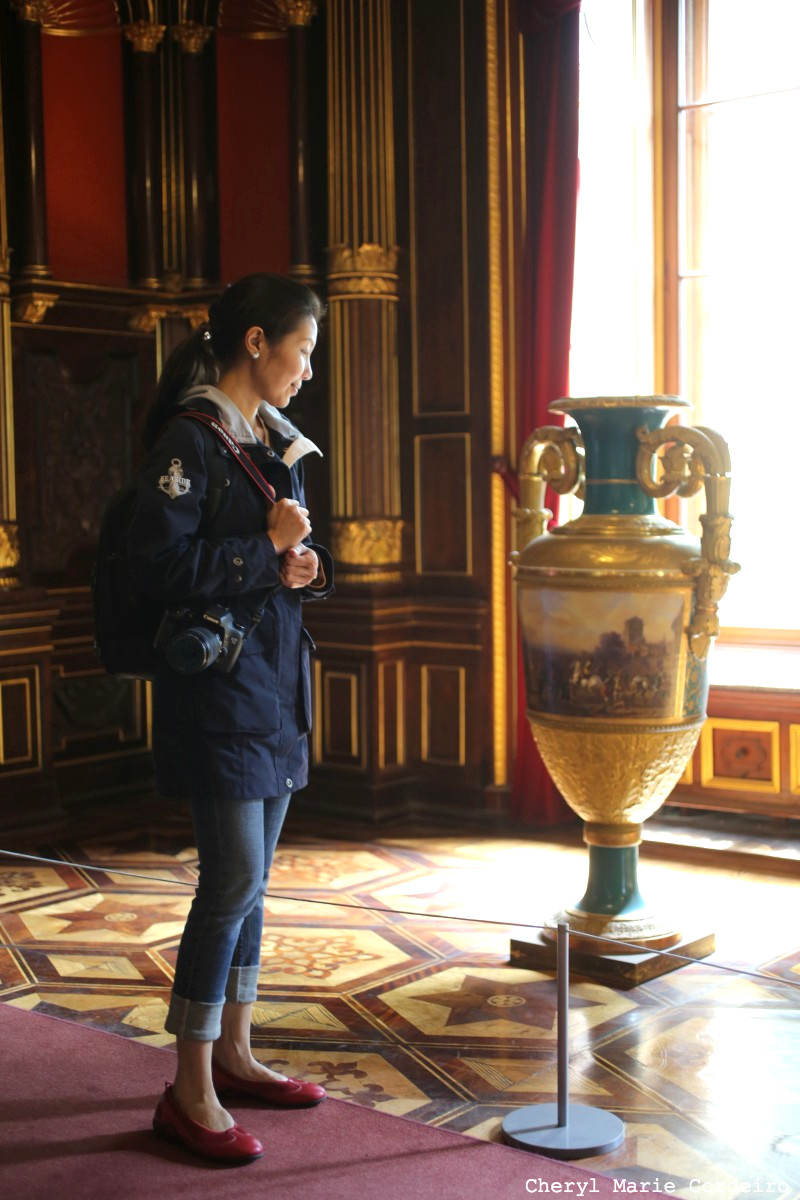At Schwerin Palace, Germany, July 2019.
Text & Photo © JE Nilsson & CM Cordeiro 2019
We were headed to Lübeck, Germany, as one of Sweden’s favourite summer things to do. A visit to Lübeck for hypermart grocery shopping is practical for when you’re catering for large parties, summer or otherwise. Else, it is for anyone with food insecurities and believe that enough food to fill 3 family pantries for 2 years on any average day of the year is perfectly normal.
Since we’ll be in Lübeck, I googled the map to find places of interest to visit that was in driving distance from Lübeck. It was a Tromsö moment for me when I clicked on Schwerin and a gorgeous fairytale castle [1] appeared on screen as the feature of Schwerin. I fell in love with what I saw onscreen. It looked magic! I could not not visit this castle, especially when docked at Lübeck for a day or two.
It’s about an hour’s drive from Lübeck to Schwerin. I think the route begins with a larger expressway, but you’ll soon find yourself off on smaller roads that run through farmlands, with little more than the sight of cornfields that stretch out over the horizon. Some sheep and horses you’ll find along the way too, grazing in the farms. The route opens up to the city of Schwerin, that is borded by lakes, the largest of which is Lake Schwerin or the Schweriner See.
Christianed a city in 1160 by Henry the Lion, Schwerin is and old city, with a rich cultural history. The city’s history is reflected today not only in detailed architecture of the Schwerin Palace, but by the collections of its surrounding museums. The Staatliches Museum Schwerin-Kunstsammlungen or State Art Museum is home to a distinguished collection of Dutch paintings from the 1600s and also German art from different periods, from medieval to renaissance. If technology were art as could be argued, the State Museum of Technology or Technische Museum might be of interest. Located some 40 km north of Schwerin, in Wismar, it’s holding a Leonardo Da Vinci exhibition from June to September 2019. 2019 marks the 500 years anniversary of Leonardo Da Vinci (1452-2019), an exceptional artist and scientist.
With a stretch, Schwerin and its castle does have a relation to Sweden where in 1358, the county of Schwerin was purchased by Duke Albrekt II of Mecklenburg, who was married in 1336 with the Swedish princess Eufemia Eriksdotter. Princess Eufemia was mother of the Swedish king Albrekt of Mecklenburg (1338-1412). Later dukes of Mecklenburg and Schwerin were also descendents from the Swedish King Birger Jarl, also the actual founder of the city of Stockholm (in 1252).
There are many accommodating parking spaces in Schwerin, some are quite proximate to Schwerin Palace, about 300 metres from the palace gardens. Within the palace grounds is the Orangery, built in the mid-1800s in French-style landscaped gardens. While the palace in itself is grand with detailed decorations on the inside, I’ve personally found the view of the lake by the Orangery unbeatable. It’s outdoors, it’s fresh, it gives a sense of relief and freedom from the beautiful but sometimes stuffy indoors of the palace walls.
Considering the complexities of time and the millions of years of human history/evolution in general, that the Orangery was constructed and cultivated in the 1800s seems like this happened only yesterday. The tall glass facade of the wings of the Orangery make for the perfect green house that today houses a restaurant cum café, Schweriner Schloss Localitäten [2].
I’ve found Schweriner Schloss Localitäten to be a sanctuary of rest on a warm summer’s day. The green interiors and the open, spacious table setting is a place to relax after walking and viewing much of the inside of the palace. Here, you can literally kick-up your feet and enjoy a leisurely brunch. Else, just settle for sampling their mineral water drawn from the palace well, together with any traditional German dessert of choice such as black forest cake, or a decadent egg liqueur cake.
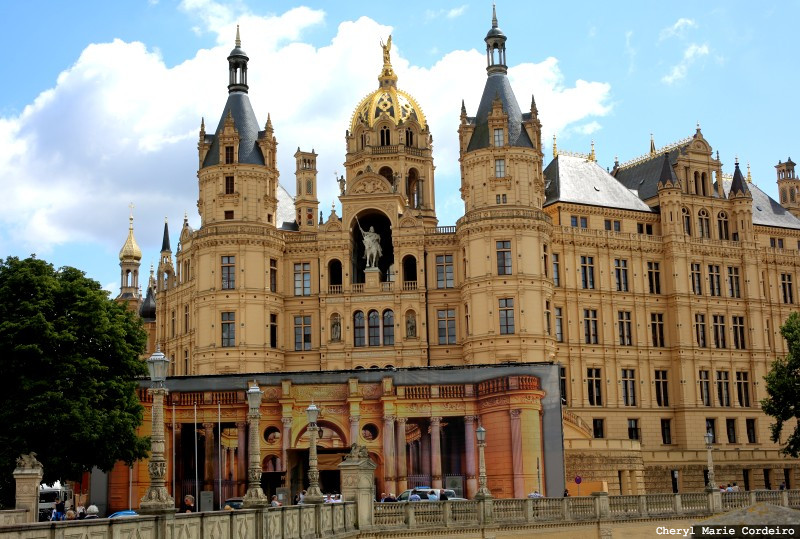
Schwerin Palace, Schwerin, Germany 2019. Schwerin is the capital and second-largest city of the northeastern German state of Mecklenburg-Vorpommern. It is about 55 km southeast of Lübeck or about 200 km to drive if you follow the local small roads to get there. Which is the only way. It takes time but its worth it.
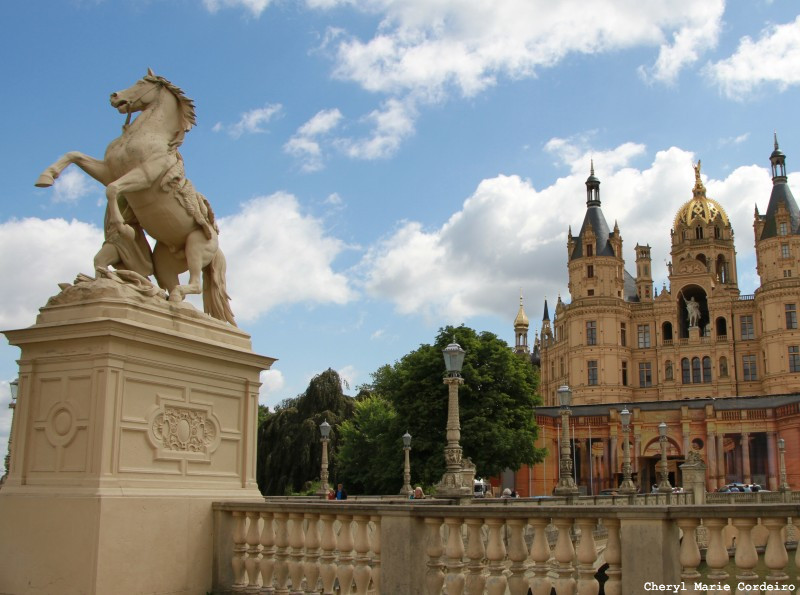
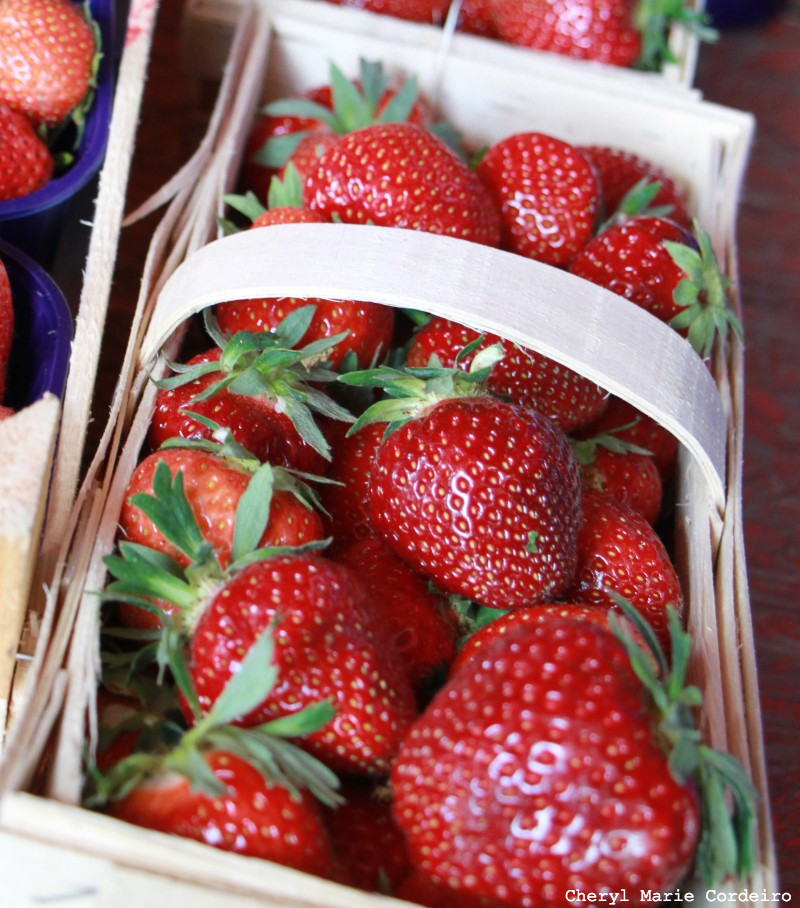
Strawberries bought at roadside. To actually see something of Germany it is a good idea to leave the A1 Autobahn and slow down some from the 180 km/hour the Germans seem to consider a comfortable driving speed, and venture into the smaller roads that connect almost everything worth seeing. So also Schwerin and its palace.
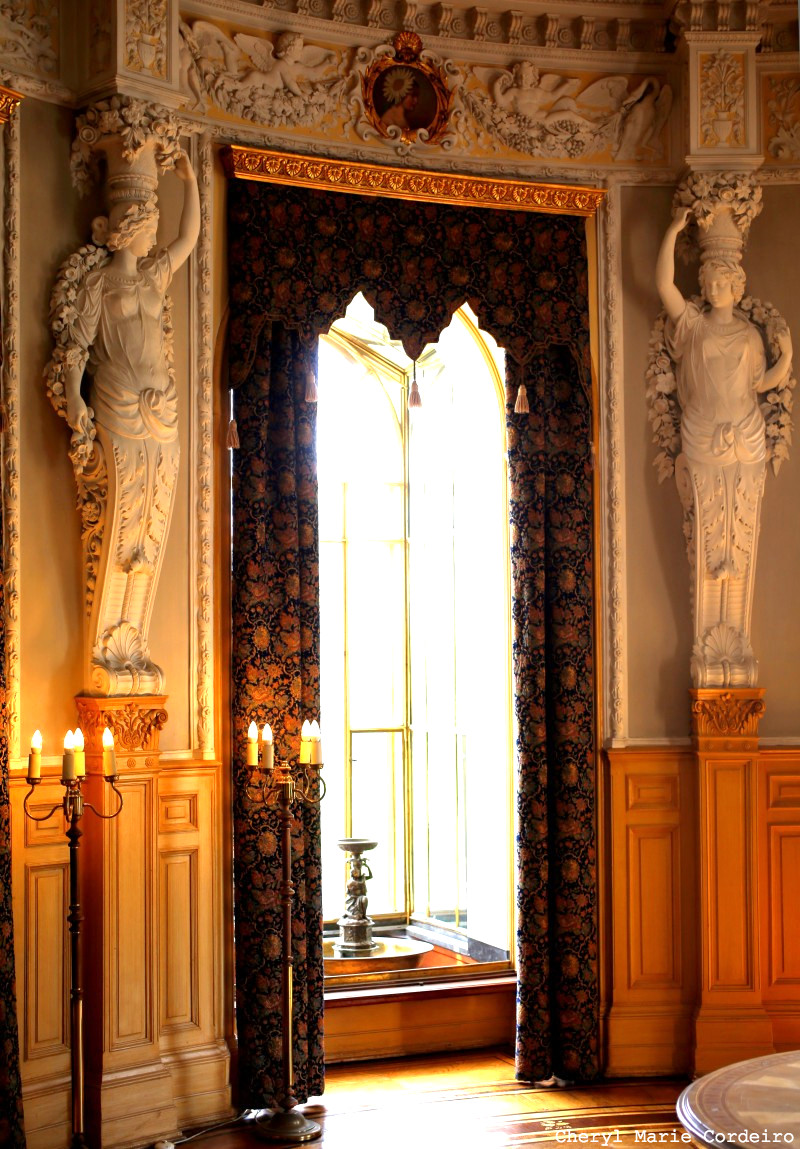
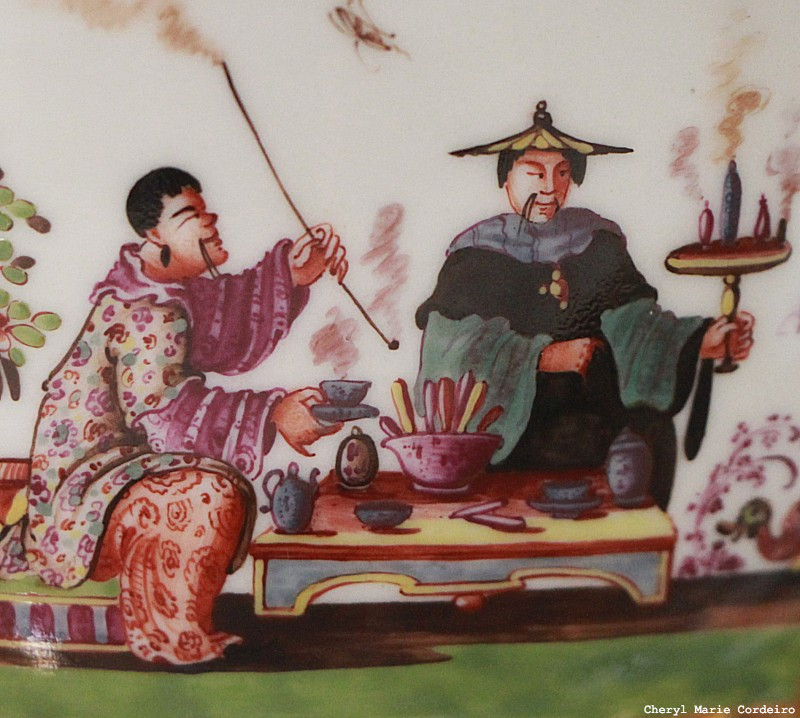
Germany or rather Sachony under “Augustus the Strong” (1670–1733) was actually the first in Europe to discover the secret of Chinese porcelain making. At the time China was a great inspiration to the western societies however maybe not so well understood. Chinoiserie decorations like this, found on a Meissen bowl in the Castle’s collection, was designed by Höroldt in 1727-33 without him or in fact almost nobody in Europe had ever visited China.
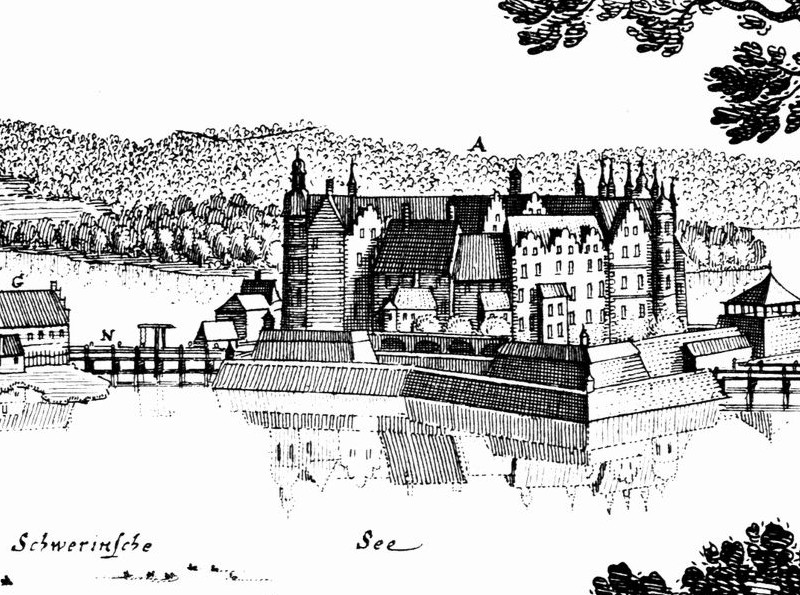
The castle itself though heavily restored is not that dissimilar from what it looked on this copper engraving by Mattheus Merian, in 1653.
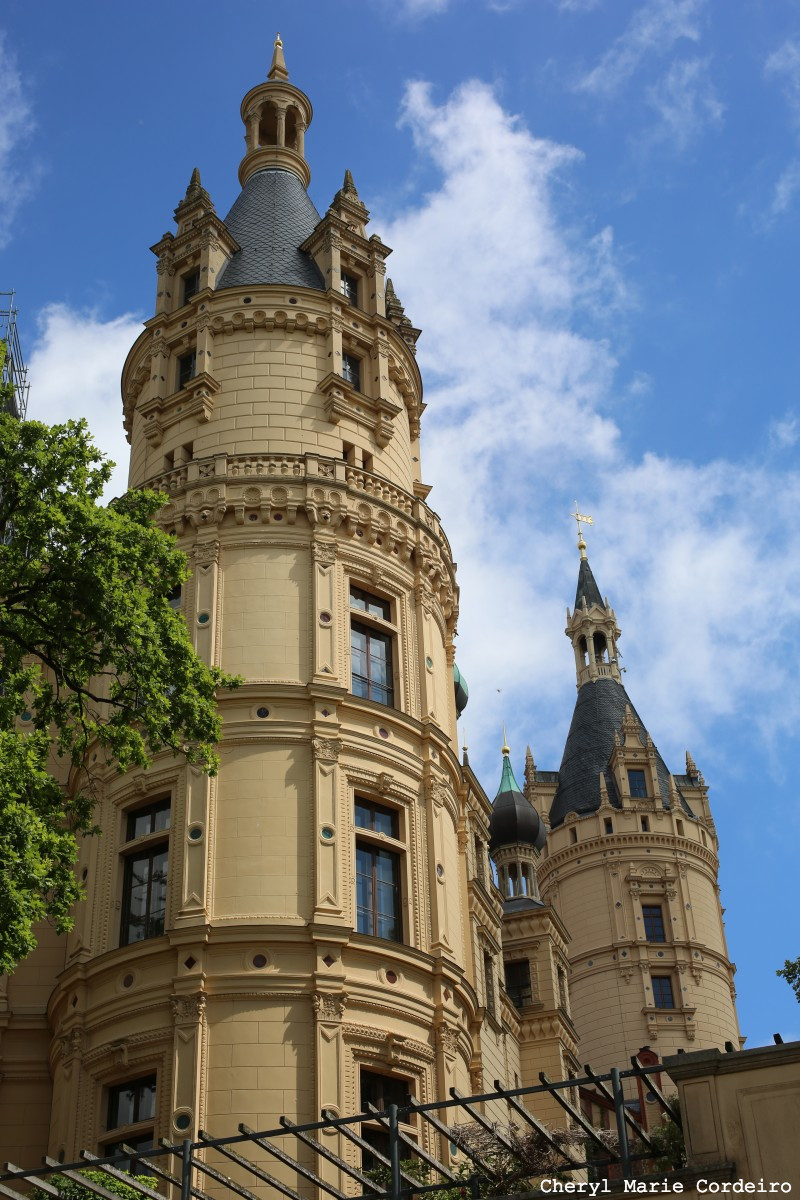
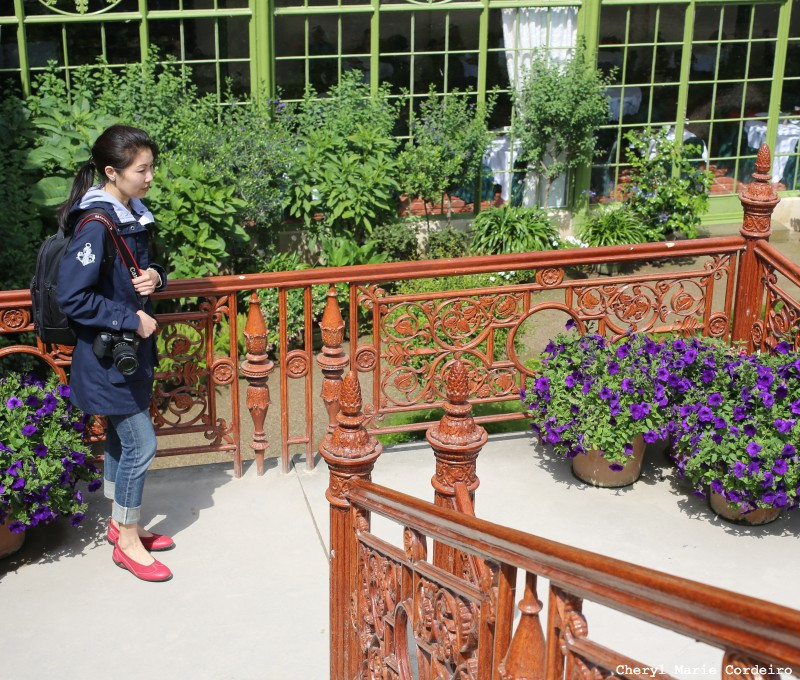
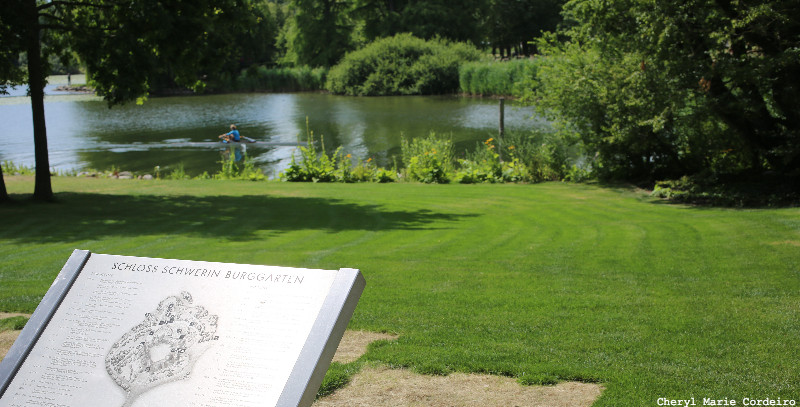
The surrounding garden pathway, leading to the Orangery at Schwerin Palace, Germany.
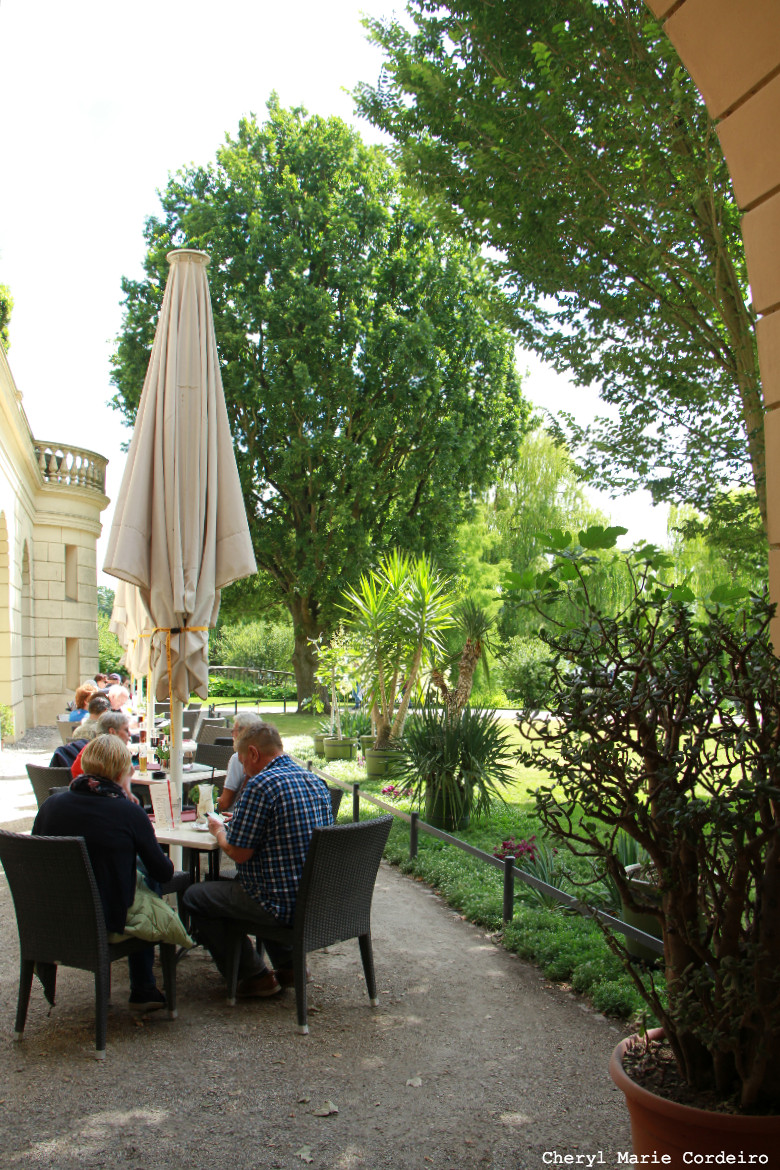
Garden seating at the Orangery of the palace grounds.
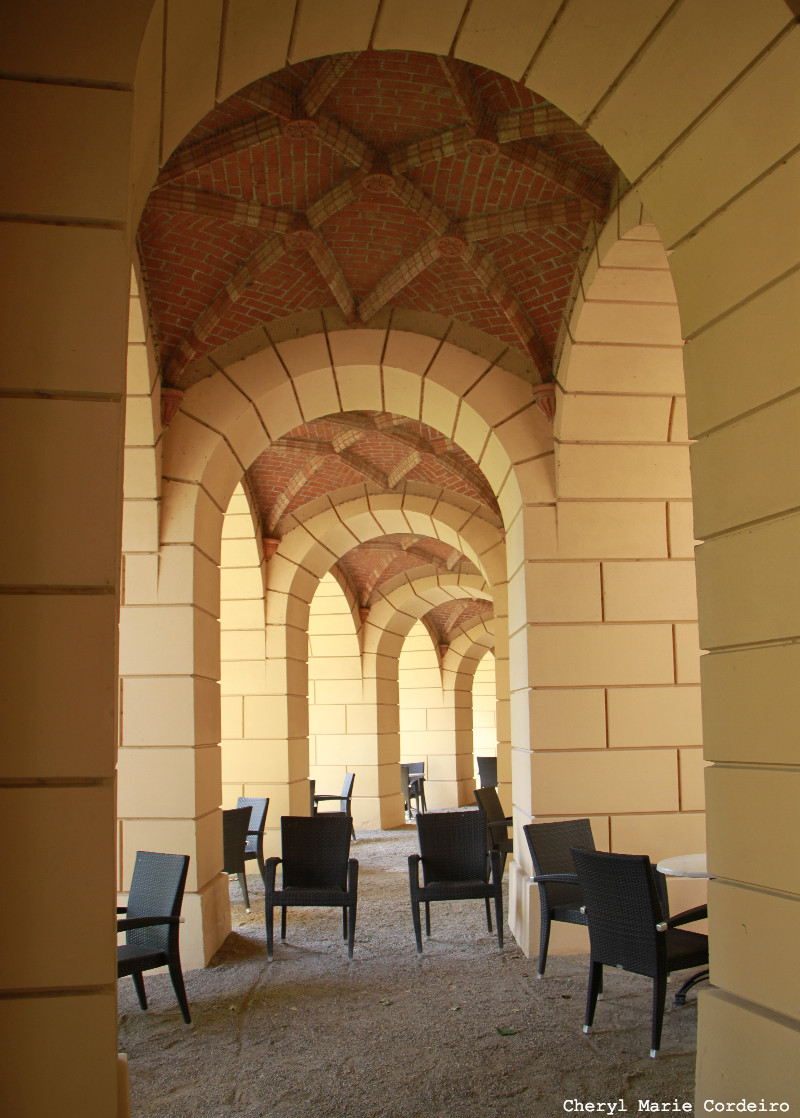
The sound of chimes and a water sprinkler at the Orangery, Schwerin Palace, Germany.
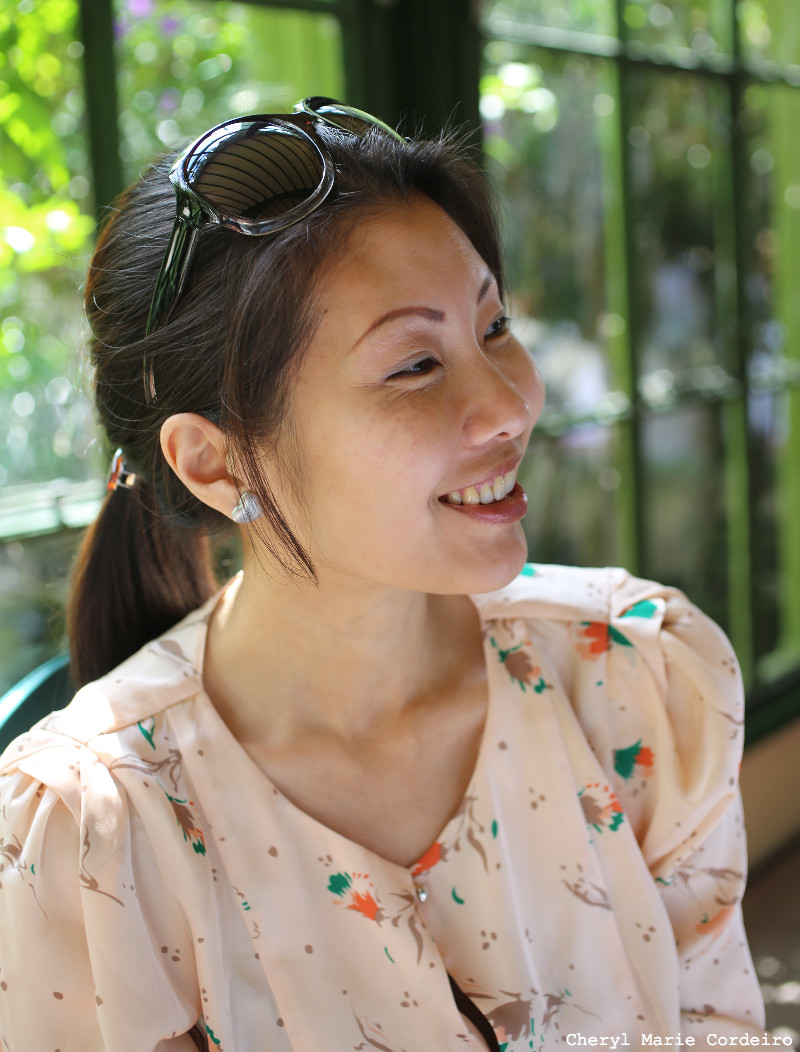
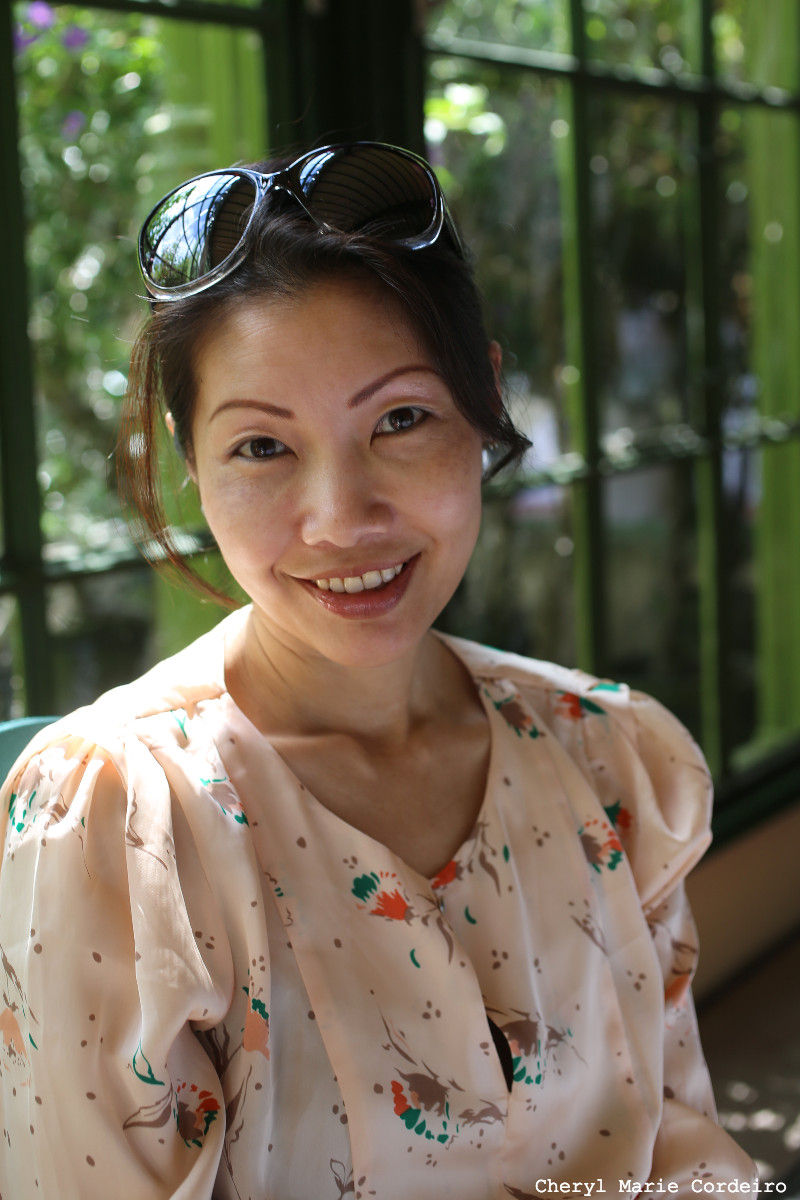
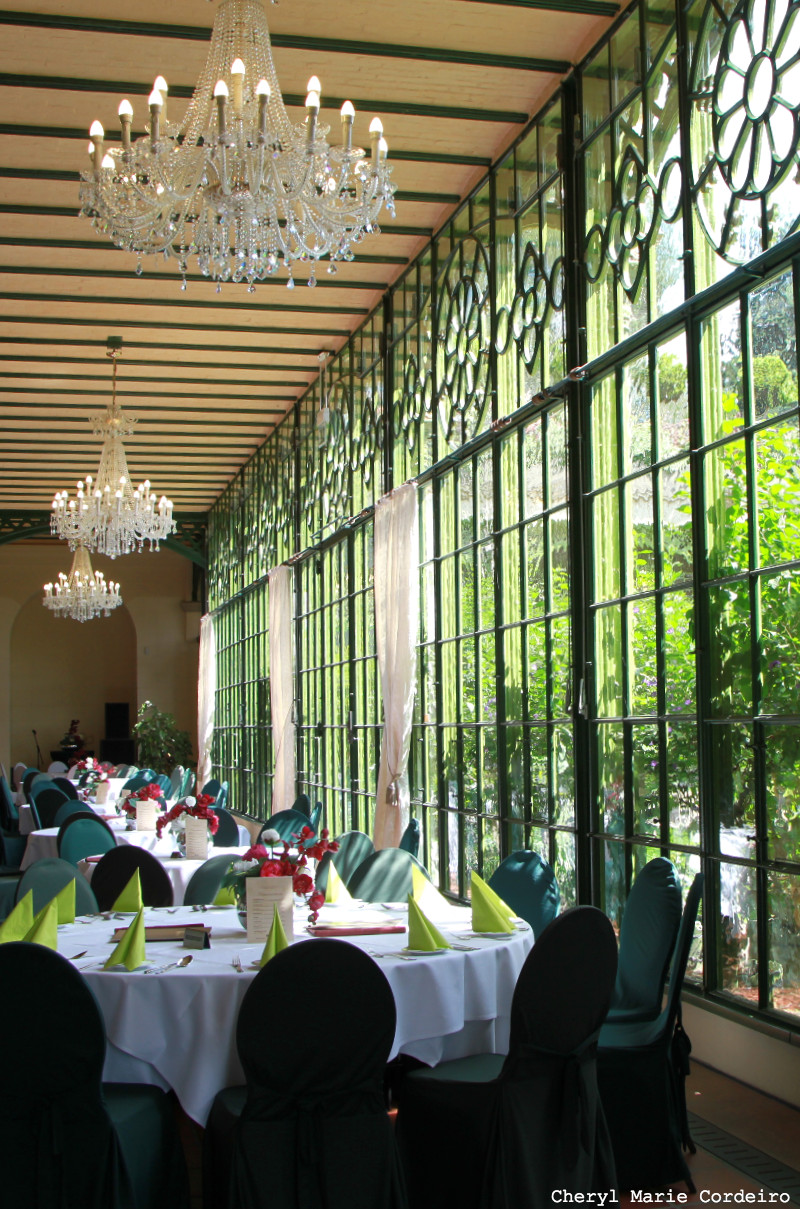
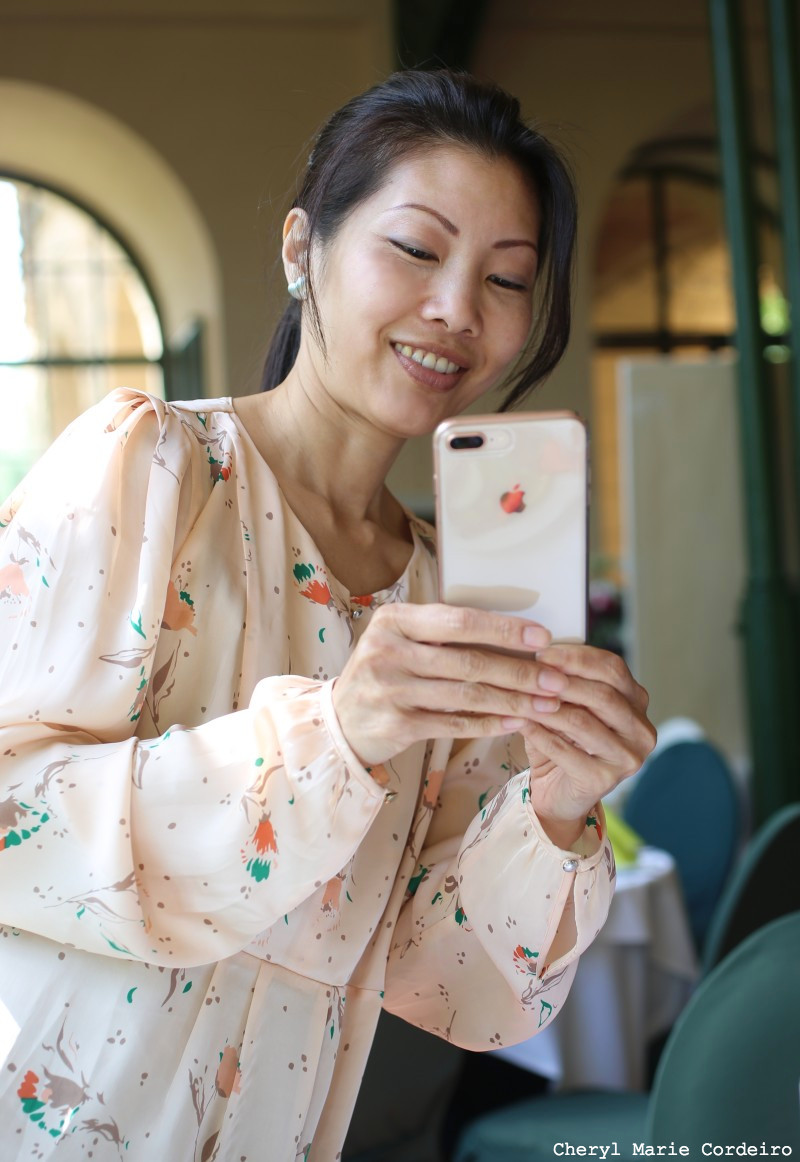
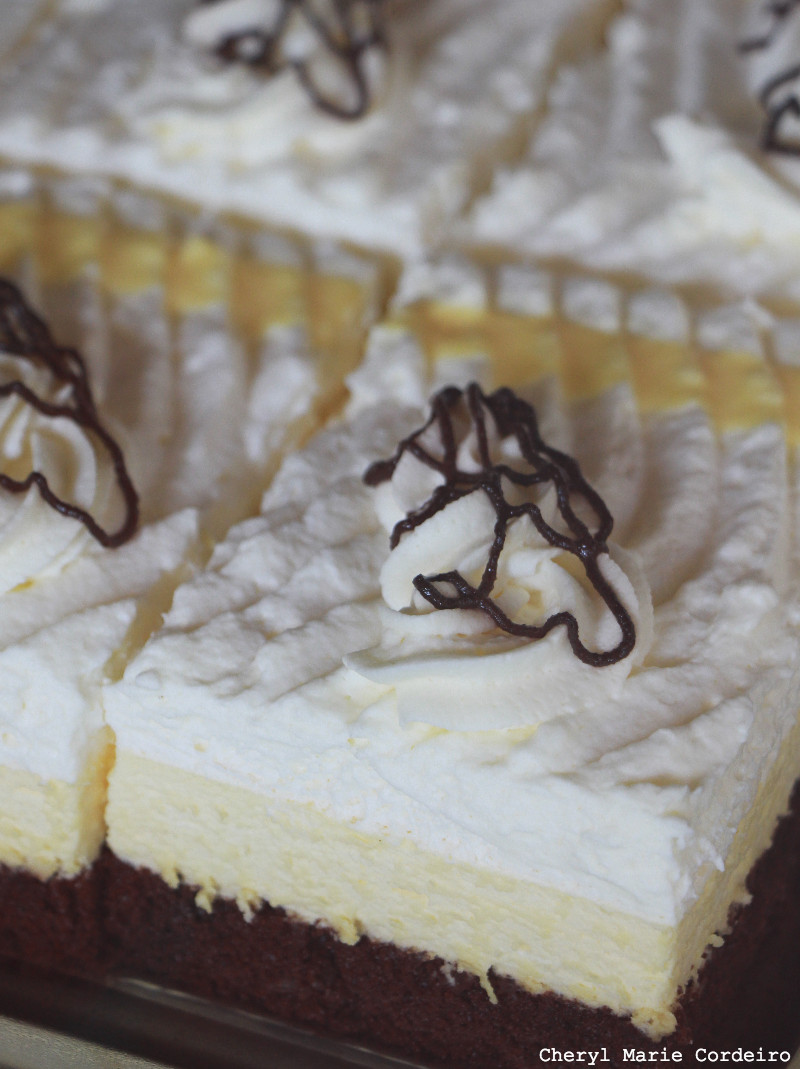
Eierlikörschnitte mit alkohol. One of the many delicious conconctions at the café, laced with egg liqueur..
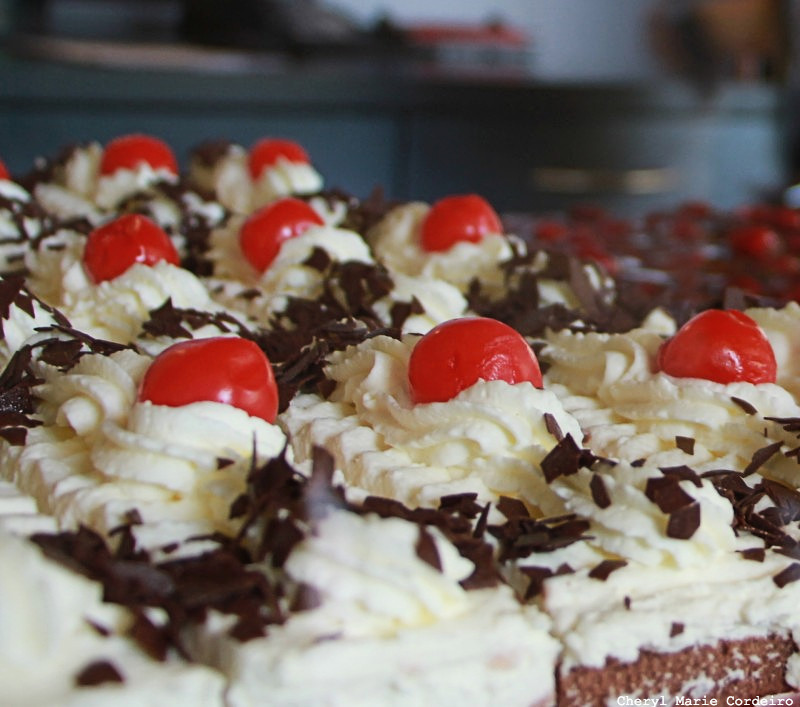
Cherries on top of Black Forest Cake slices.
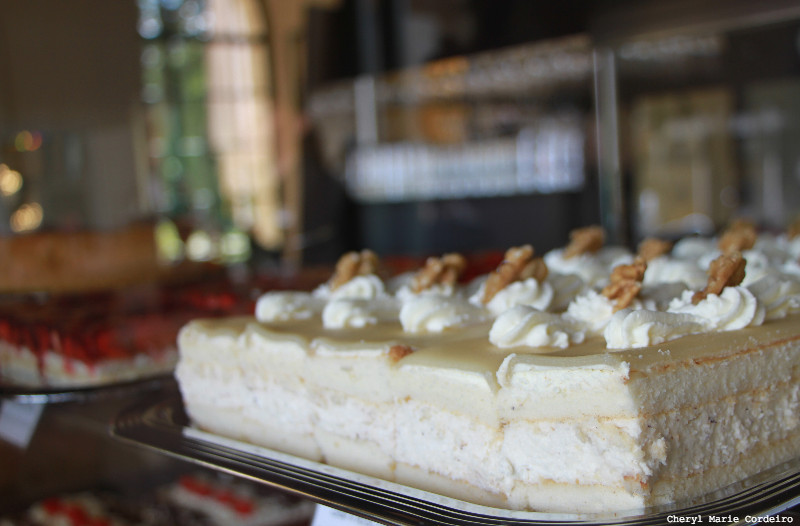
Marzipan-Nuss-Sahneschnitte. Marzipan cream cake. Beautiful.
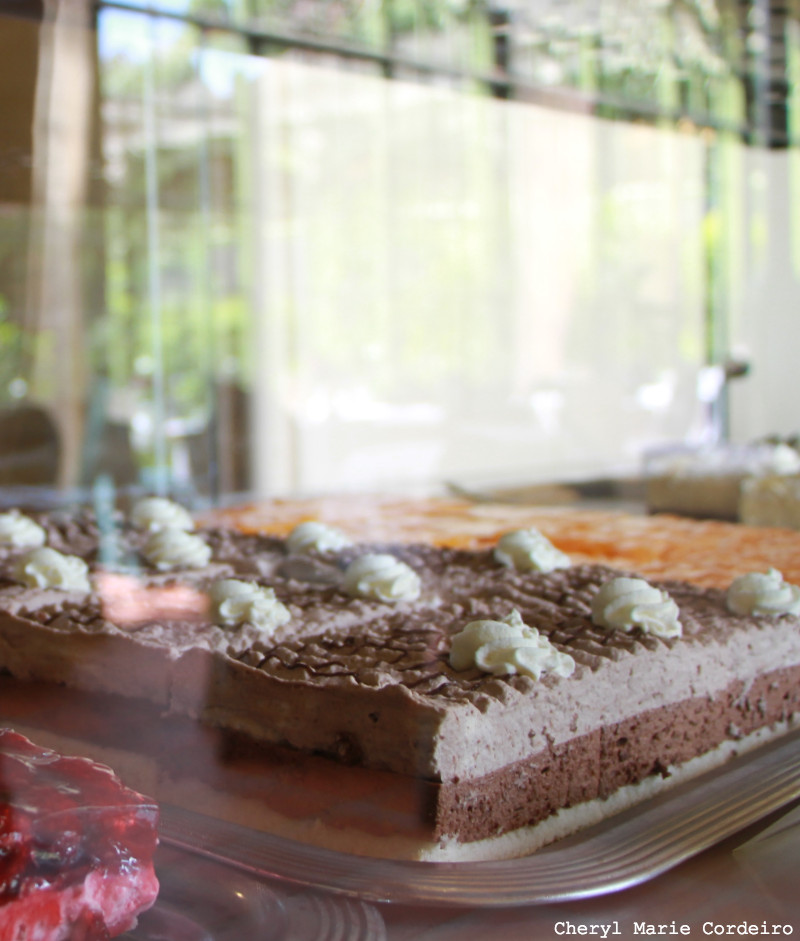
Schoko-Sahneschnitte. Chocolate cream cake. And I couldn’t ogle these cakes more than I did that afternoon.
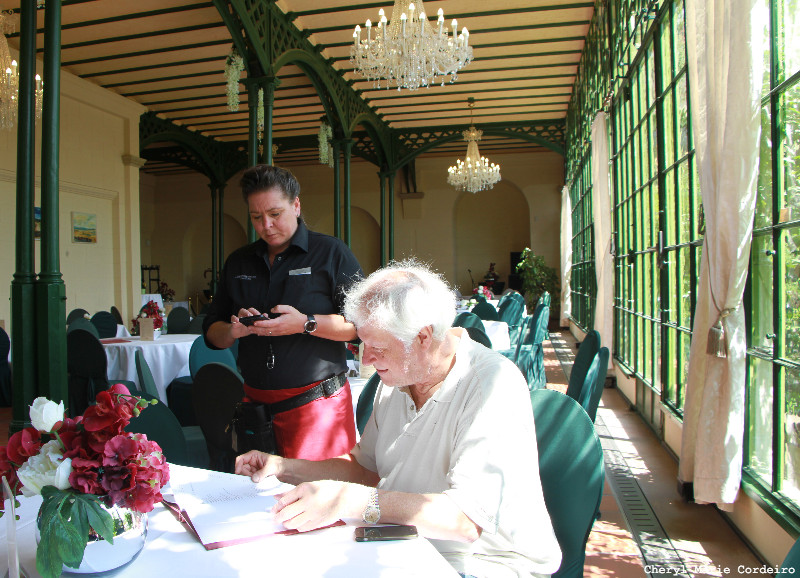
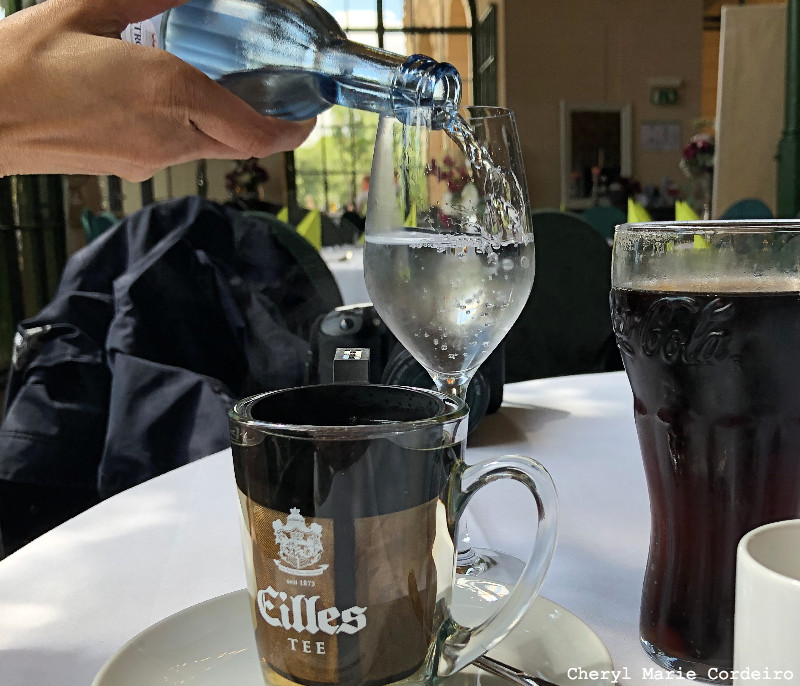
Mineral water drawn from the palace grounds.
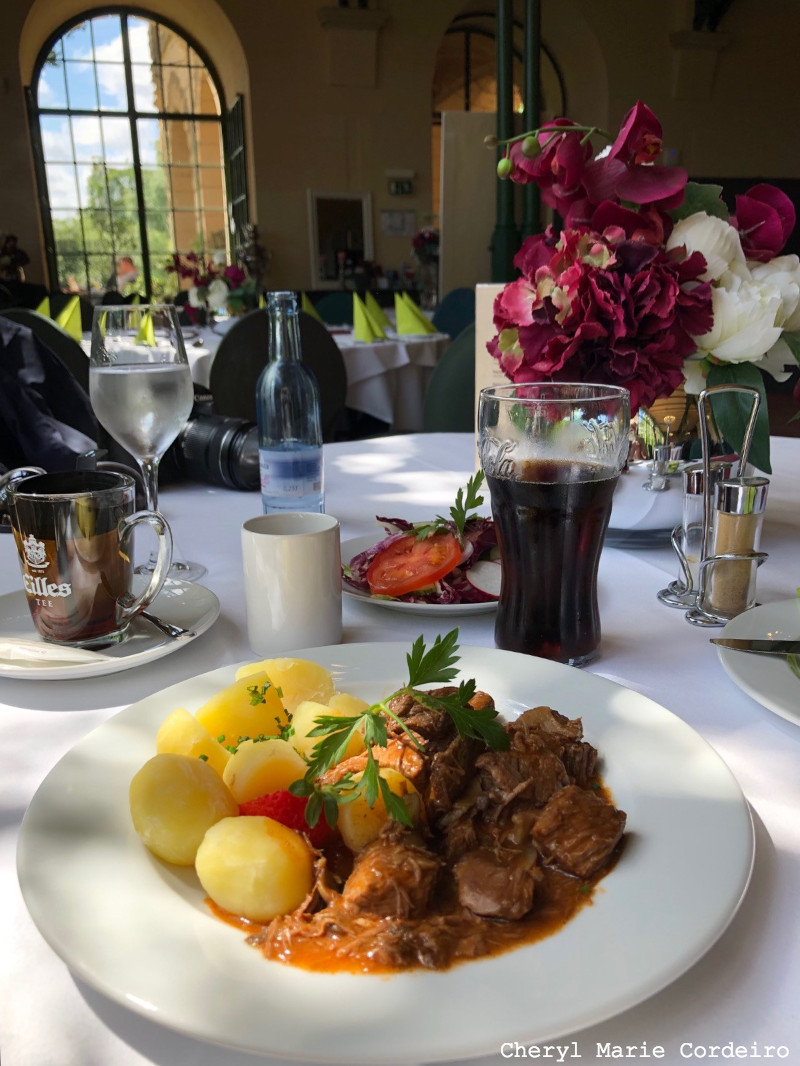
Lunch. Gulasch.
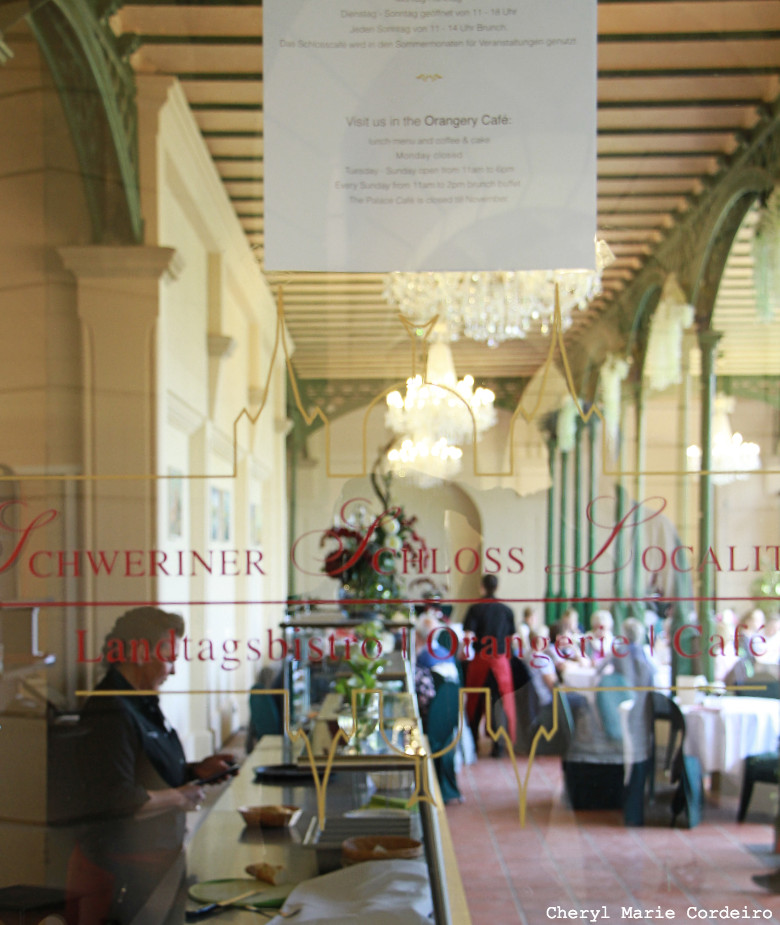
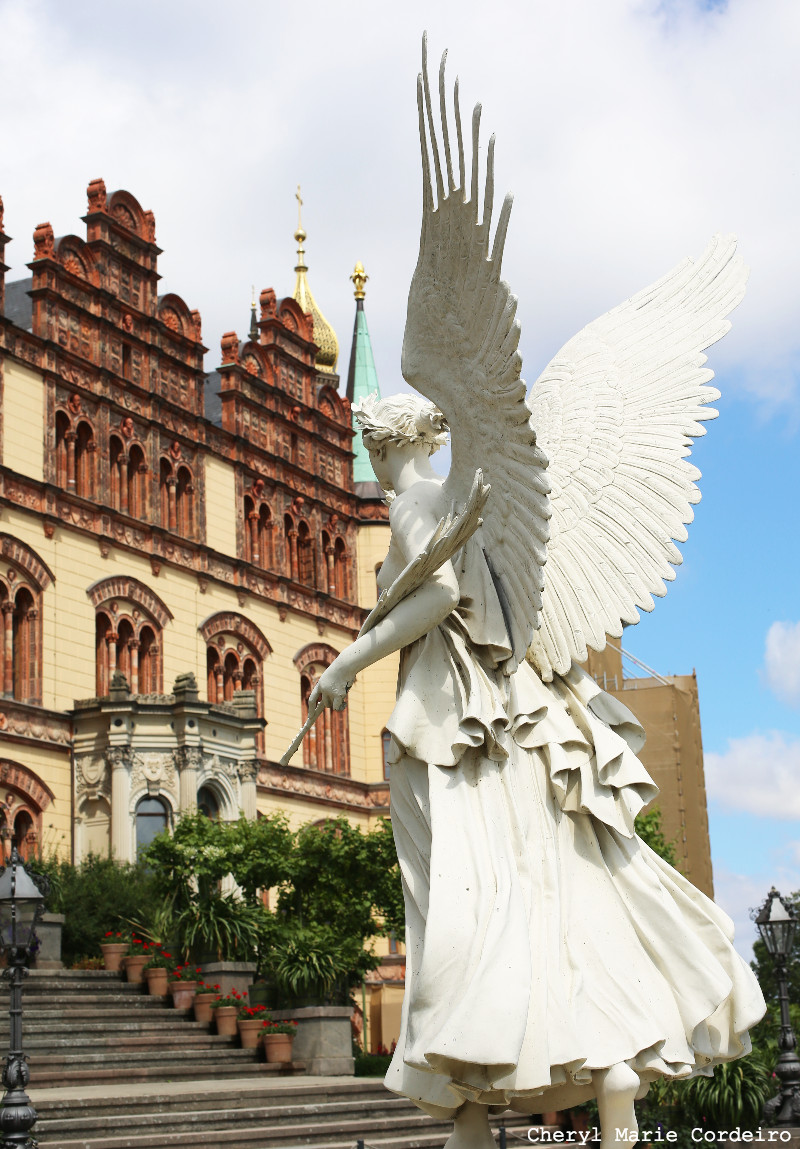
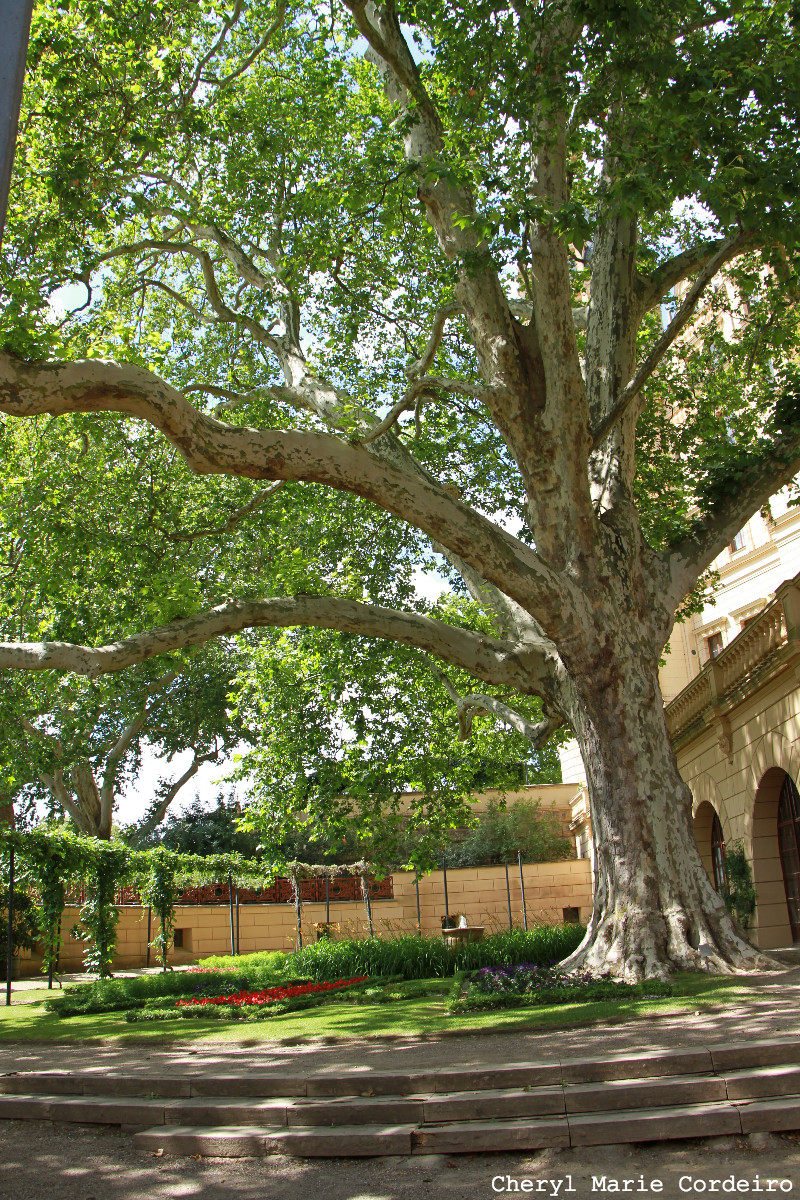
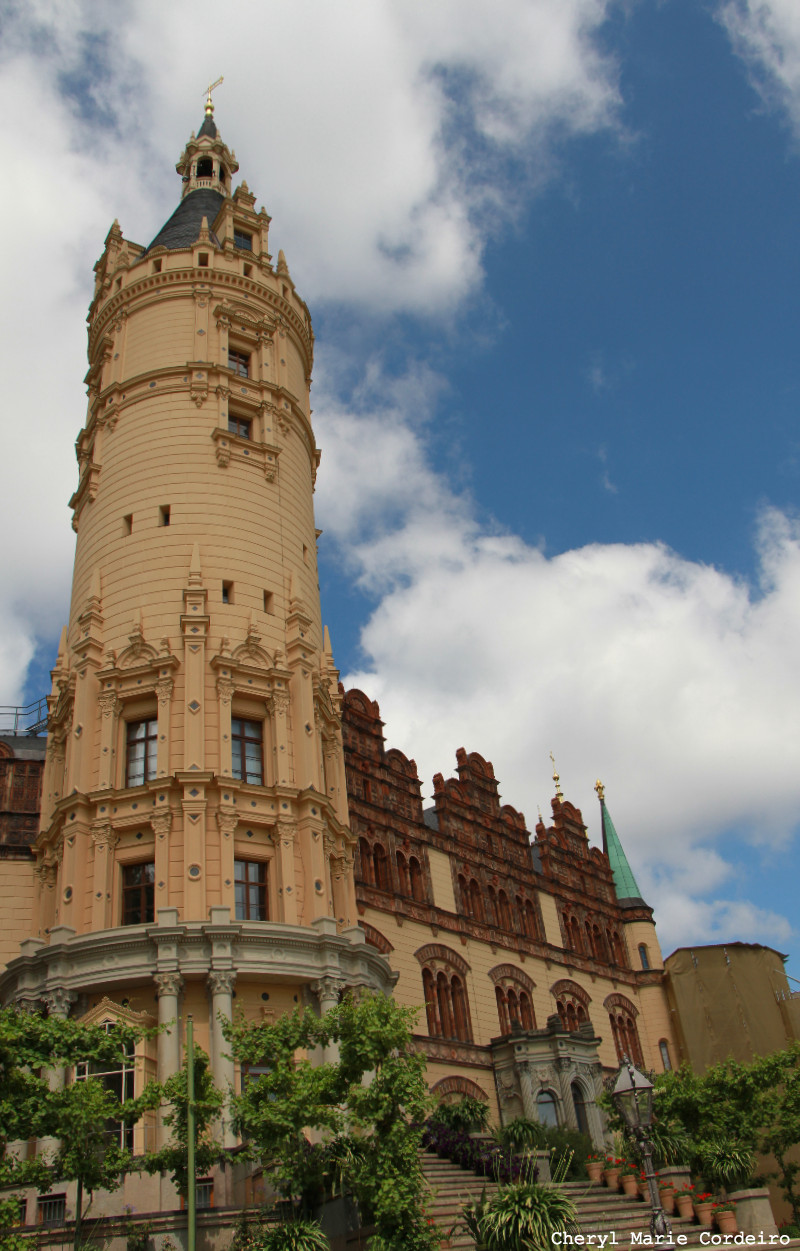
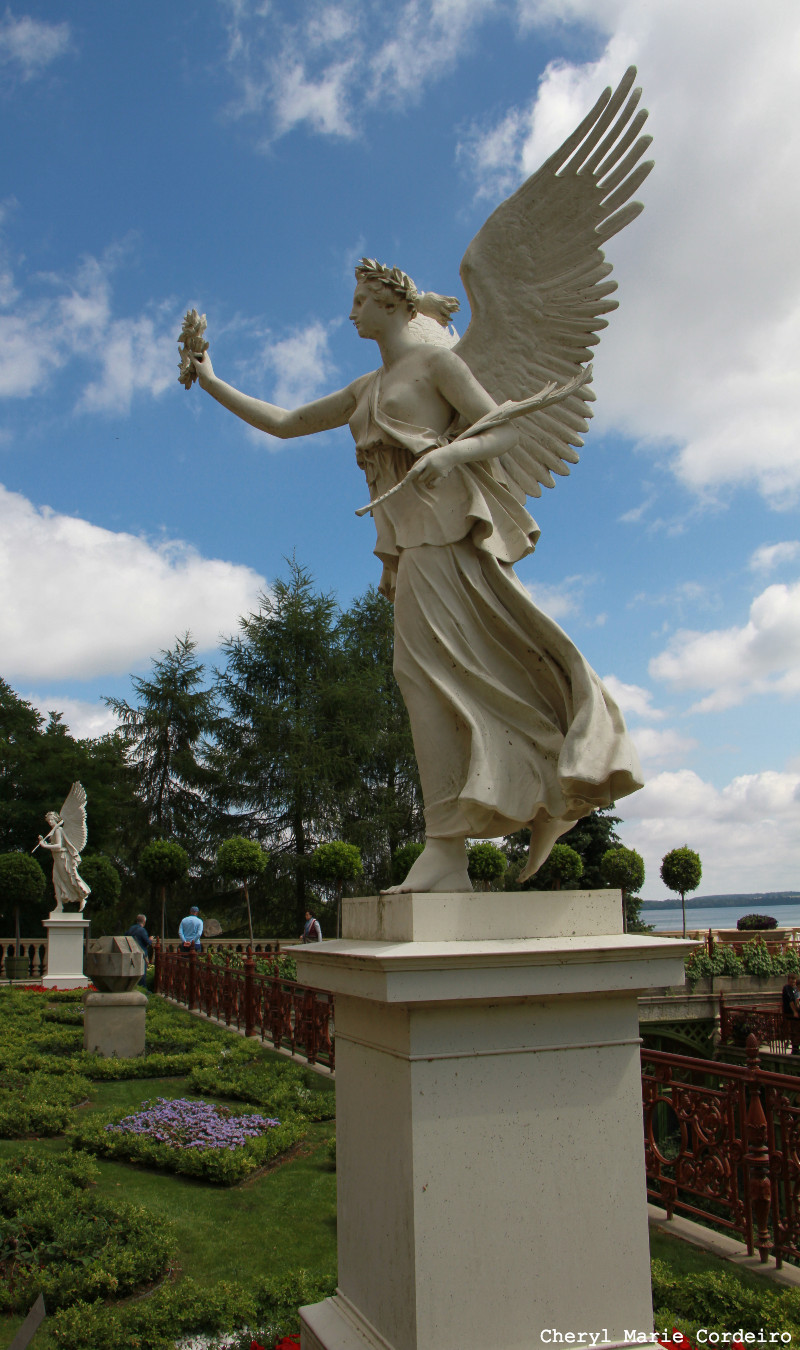
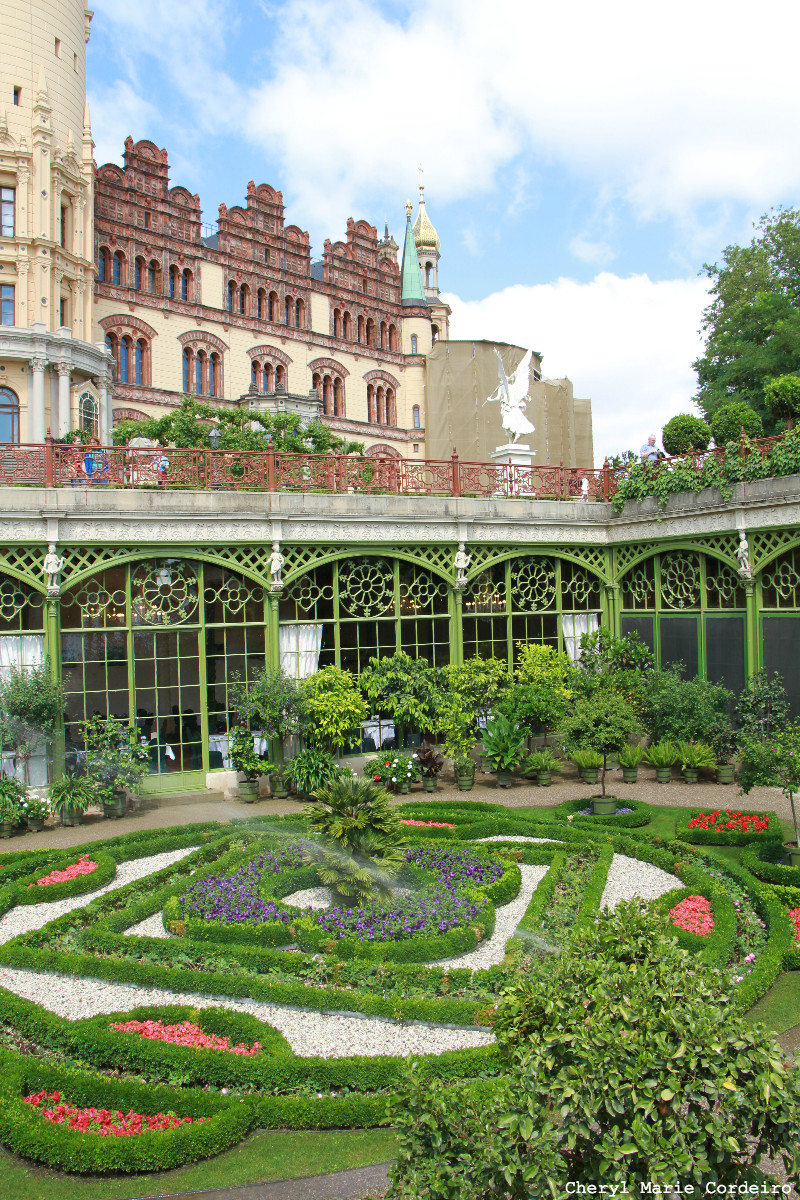
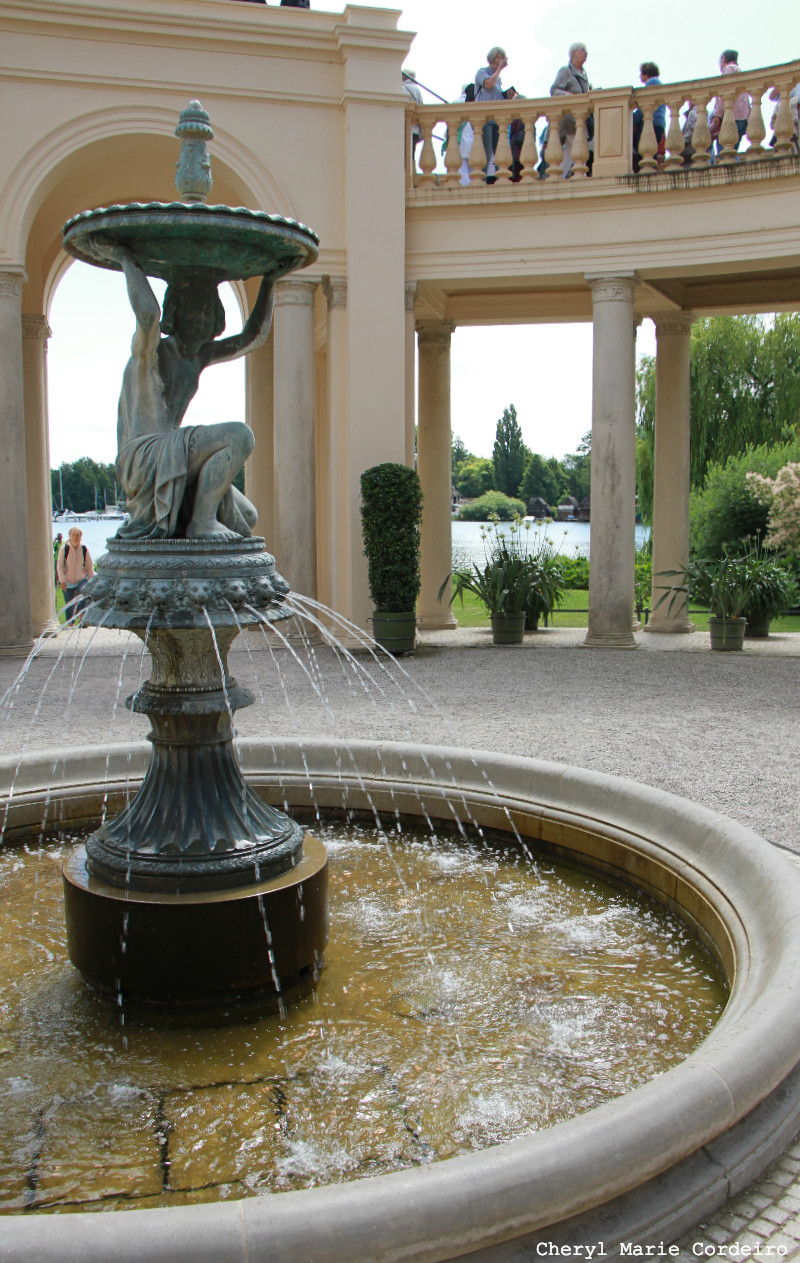
Reference
[1] Schwerin Castle, website at https://www.schwerin.com/en/attractions-and-sights/schwerin-castle/
[2] Schweriner Schloss Localitäten, website at https://www.schweriner-schloss-localitaeten.de/
